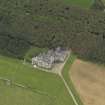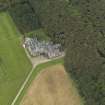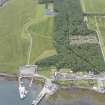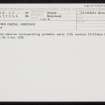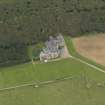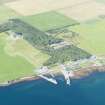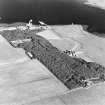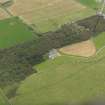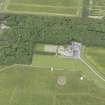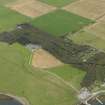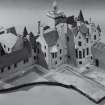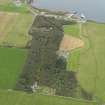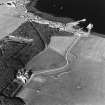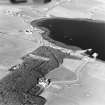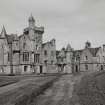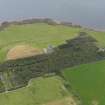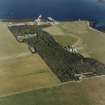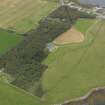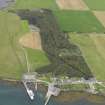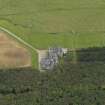Shapinsay, Balfour Castle
Country House (19th Century)
Site Name Shapinsay, Balfour Castle
Classification Country House (19th Century)
Alternative Name(s) Cliffdale House; Sound; Balfour House; Balfour Castle Policies
Canmore ID 2399
Site Number HY41NE 17
NGR HY 47477 16435
Datum OSGB36 - NGR
Permalink http://canmore.org.uk/site/2399
- Council Orkney Islands
- Parish Shapinsay
- Former Region Orkney Islands Area
- Former District Orkney
- Former County Orkney
HY41NE 17.00 47477 16435
Balfour Castle [NAT]
OS (GIS) MasterMap, November 2010.
HY41NE 17.01 HY 47844 16356 Lodge
HY41NE 17.02 HY 47697 16558 Walled Garden
HY41NE 17.03 HY 47890 16383 Turret
HY41NE 17.04 HY 47844 16358 Gate Piers
HY41NE 17.05 HY 47857 16197 Dovecot
HY41NE 17.06 HY 47225 16430 Gate
A subterranean building to the SW of Balfour Castle was mentioned in The Orcadian, January 10th 1863.
(Undated) information in NMRS.
19th century mansion incorporating probable early 17th century Cliffdale House.
Visited by OS, 5 Oct 1972.
REFERENCE:
Architect: David Bryce begun 1846
1847 Scottish Baronial
EXTERNAL REFERENCE:
Scottish Record Office:
NRA(S) 627. Box 15. Item 15/7
Letters to David Balfour of Trinaby and Mrs Balfour. They include a large number dealing with the building of Balfour Castle and include a number from D W Bryce, architect, relating to his designs, estimates, etc.
Box 36 - Letters to Davis Balfour of Trenabie - include Davd Bryce, architect, Edin - enclosing plans of additions to Cliffdale, with explanation of rooms. 3 Sept 1846.
(Undated) information in NMRS.
Publication Account (1996)
Between 1846 and 1850, David Bryce designed his first large commission for David Balfour of Shapinsay: his remit to enlarge the existing family house overlooking the sheltered bay of Elwick. It was an invitation to design on a lavish scale, and accordingly Bryce created an outstanding example of a country mansion in Scottish Baronial style, with a square castellated tower rising above the main entrance, further embellished with a corner turret, with huge bay windows to the public rooms, square turrets with pyramidal roofs, tound turrets with conical roofs, crow stepped gables and a glorious conservatory almost as large as the drawingroom. The main stair remained in the central, older portion of the now Z-shaped house, but, typical of such Bryce designs, the public rooms are served by an immensely long and broad corridor into which the new main entrance opens.
Part of the village was demolished to improve the approach to the house, and Bryce designed an imposing entra nce into the grounds, which consists of an archway with a mock portcullis and flanking lodges, the whole gateway capped by a corbelled parapet. The terraced gardens were laid out by Craigie Halkett of Cramond, Edinburgh, and they include an elaborate 17th-century gateway. This belonged to an earlier house that was burned down by Hanoverian soldiers in 1746 and replaced by the L-shaped building incorporated into Bryce's grand design. It suits well the Baronial style of the later mansion. A moulded archway is flanked by columns and topped with a pediment bearing an armorial panel, the whole composition richly decorated: mermaids holding harps, men and animals playing musical instruments, and, flanking the armorial panel, unicorns and caryatid figures in 17th-century costume. The coats of arms and initials are those of Arthur Buchanan and Margaret Buxtoll and are identical to those at Carrick House on Eday (no. 19), though the date here is 1674, twelve years later than the Carrick panel.
Another legacy from the 17th century is Dishan Tower, a circular dovecote now somewhat oddly situated on the rocky fo reshore, which was restored equally oddly in the 19th century as a 'douchehouse', taking advantage of its proximity to the sea to provide a salt-water shower. This too is embellished with a corbelled and crenellated parapet and a crowstepped cap-house.
Information from ‘Exploring Scotland’s Heritage: Orkney’, (1996).







































